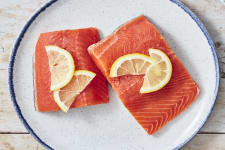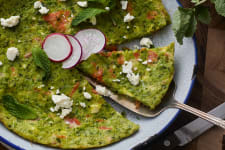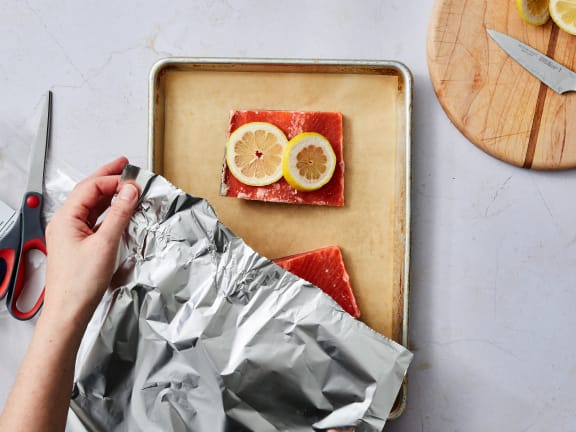
How to Cook Salmon from Frozen
September 1st, 2021The Best Ways to Cook Salmon from Frozen
The absolute best way to enjoy wild-caught seafood that’s been flash-frozen at the peak of its freshness is to give it the time to thaw out properly. But sometimes there is literally no time to thaw, which is when it’s good to know that while not ideal, cooking frozen salmon straight out of the freezer the right way is a great kitchen skill to have.
While you’ll need to cook salmon after it’s properly been defrosted to best appreciate its texture and flavor in any salmon recipe, of course there are always days when you might find yourself in a time crunch — perhaps you forgot to move your salmon portions to the refrigerator to thaw the night before, or maybe you weren’t planning on cooking until this very moment.
Can You Cook Salmon from Frozen?
Yes. Knowing the best way to cook salmon from frozen will help you preserve as much quality as possible. The best options are to use cooking methods with intense sources of heat.
How Long Should You Cook Salmon from Frozen?
It depends on the cooking method. Steaming salmon from frozen can take as little as 5 minutes, while baking salmon from frozen can take up to half an hour. Cook will vary depending on the size of the fillet and your preference for doneness.
The Best Ways to Cook Salmon From Frozen
How to Bake Salmon from Frozen

When baking or roasting salmon from frozen, cook fillets at 425F so that they cook through as quickly as possible. We highly recommend serving baked-from-frozen salmon with a topping that has a textured and saucy consistency to add moisture to the cooked salmon.
How to Pan-Fry Salmon from Frozen

You can achieve crispy skin when pan-frying frozen salmon in under 10 minutes, making this one of the best ways to cook salmon from frozen.
The key to pan-frying from frozen is to par-cook the fish first, allowing the ice glaze on the surface of the fillet to melt off before searing the salmon skin side down. Serving these pan-fried portions with a fresh hit of lemon juice is a great way to add a little moisture to seared salmon.
How to Air-Fry Salmon from Frozen
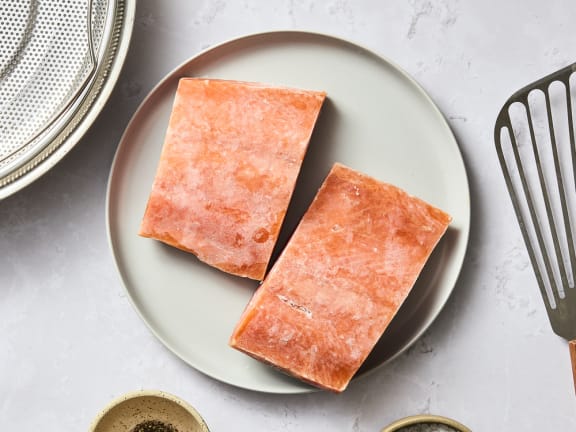
Using an air fryer to cook salmon from frozen makes it easy to cook a delicious meal in under 15 minutes. To air-fry salmon from frozen, you’ll place the fillet in the air fryer basket and par-cook it until the ice on the exterior of the fish has melted off. Then, you can season to your liking with a sauce or a rub before cooking it all the way through.
Or, to streamline the process, you can simply drizzle the fish with olive oil while it’s still fully frozen, then air fry it until it’s done.
How to Steam Salmon from Frozen
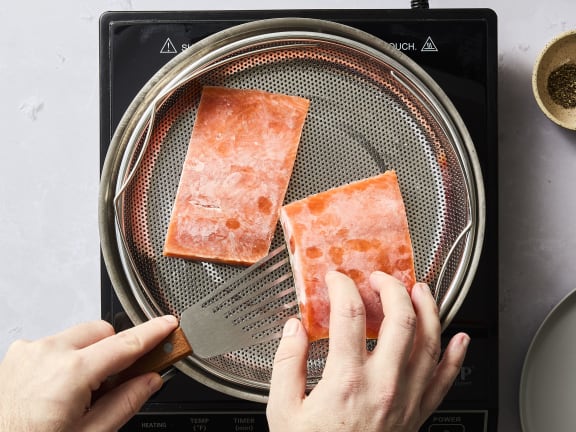
Steaming salmon from frozen is a way to prepare moist fillets that have far less risk of drying out than other cooking methods from frozen. One fun and delicious aspect to steaming salmon from frozen is the ability to customize your steaming liquid by adding different flavor profiles. For example, you can add lemon slices and white wine for a light and bright flavor. Or, use vegetable or chicken stock instead of water for a heartier take.
How to Season Salmon from Frozen
When seasoning salmon, consider the type of salmon you’re using. Sockeye salmon has a robust flavor that works especially well with bold seasonings. Coho, on the other hand, is milder and benefits from more delicate flavor profiles.
Here are some no-fail seasoning ingredients to use when cooking salmon from frozen.
-
Dijon mustard for punchy, spicy acidity. Try mixing in some honey. This can be brushed onto salmon after the fillet has thawed in the first stage of cooking.
-
Garlic powder for umami and that garlicky bite. A great addition to spice rubs, which can be sprinkled on fillets after they have thawed in the first stage of cooking.
-
Lemon juice as a finishing touch.
-
Soy sauce for salty umami and color. Excellent when paired with sugar, honey, or maple syrup as a glaze.
-
Black pepper is a must. Freshly ground pepper will give you the best spice.
-
Fresh herbs for a burst of flavor to finish the dish. Tender green herbs like dill, cilantro, parsley, or chives are especially good with salmon, or any variety of fish.
Is It Safe to Cook Frozen Salmon?
Importantly, cooking frozen fish is safe to do, as long as it has reached a safe internal temperature.
The USDA recommends an internal temperature of 145F for salmon, which likely is more well done than most people prefer. However, this is the only way to ensure you’ve completely eliminated the risk of food-borne illnesses from your cooking. Frozen salmon does not cook as evenly as when it is thawed, so when you cook frozen salmon, check the internal temperature in a few places to ensure that the entire portion is cooked through.
If you prefer to cook salmon to a medium or medium rare doneness, it’s best to defrost before cooking. This way, the entire piece of fish will spend less time in what the USDA considers the temperature danger zone — between 40F and 140F. In this temperature range, which is basically anywhere between refrigerated and fully cooked, there’s always some risk that raw meat, poultry, and fish will develop bacteria that can cause food-borne illness. And when you’re cooking from frozen, salmon naturally will require a longer cooking time and will be in this “danger zone” for longer than if they had first been defrosted; this is one reason why fish should not be cooked from frozen using a slow cooker.
The USDA does suggest that it is indeed safe to cook thin fillets of fish or meats from frozen, but there is no official guidance on exactly how thin these cuts need to be in order for this guidance to apply. Because of this lack of clarity from the USDA, we can only confirm that it is proven safe to cook any fillet from frozen if you’re planning to cook the salmon all the way through. However, because cooking from frozen is an uneven process, the salmon likely will be well done anyway no matter what you do.
Get Healthy Seafood and Fresh Salmon Every Month
Learning how to cook frozen seafood gives you practically instant, clean protein straight from the freezer. Be sure to stock your kitchen with sustainably-caught salmon by buying your seafood online from Wild Alaskan Company. You’ll get high-quality, wild-caught seafood delivered straight to your doorstep. Order your wild-caught salmon online today.
